Posted: June 14th, 2015 | No Comments »
Every time Shanghai does a population census the numbers get more ridiculous and argued over – 18, 19, 23 million or whatever. In 1936 the city topped out at a then impressive 3,500,000 having added 135,000 odd over the last year. Of course the next year, 1937, the influx would be significantly more as refugees from Japanese attack flooded into the city. Still, in 1936, Shanghai came in fifth globally and looked likely to have more people than Berlin pretty soon. It’s been a while since Shanghai and Berlin competed on the population numbers stakes!!

Posted: June 13th, 2015 | No Comments »
By January 1938 the Chinese nationalist soldiers that had been fighting the Japanese around Shanghai were in retreat. Here, in January 1938, a Chinese soldier attempting to enter the French Concession is disarmed by a French soldier before being admitted…..

Posted: June 12th, 2015 | No Comments »
Hsiao-yen Peng’s Dandyism and Transcultural Modernity doesn’t have the most exciting of covers so I’ve improvised…still looks a fascinating read…
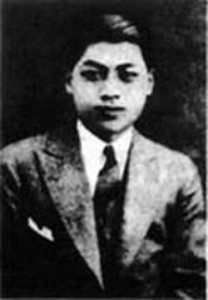
Liu Na’ou – Chinese Dandy
This book views the Neo-Sensation mode of writing as a traveling genre, or style, that originated in France, moved on to Japan, and then to China. The author contends that modernity is possible only on “the transcultural site”―transcultural in the sense of breaking the divide between past and present, elite and popular, national and regional, male and female, literary and non-literary, inside and outside. To illustrate the concept of transcultural modernity, three icons are highlighted on the transcultural site: the dandy, the flaneur, and the translator. Mere flaneurs and flaneurses simply float with the tide of heterogeneous information on the transcultural site, whereas the dandy/flaneur and the cultural translator, propellers of modernity, manage to bring about transformative creation. Their performance marks the essence of transcultural modernity: the self-consciousness of working on the threshold, always testing the limits of boundaries and tempted to go beyond them. To develop the concept of dandyism―the quintessence of transcultural modernity―the Neo-Sensation gender triad formed by the dandy, the modern girl, and the modern boy is laid out. Writers discussed include Liu Na’ou, a Shanghai dandy par excellence from Taiwan, Paul Morand, who looked upon Coco Chanel the female dandy as his perfect other self, and Yokomitsu Riichi, who developed the theory of Neo-Sensation from Kant’s the-thing-in-itself.
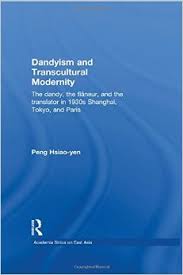
Posted: June 11th, 2015 | No Comments »
Nancy Chen was a star of Shanghai’s wartime cinema. She was referred to in the foreign media as China’s “Oomph Girl” and was seen as a symbol of westernisation and the liberated woman on screen. She was a star when the pre-war generation, such as Butterfly Wu, had largely retired, or semi-retired, or refused to work during the Japanese occupation. These pictures are from a profile of her in the American newspapers that chose to note the following:
She is a little over five feet tall
She is unmarried
She likes to wear tennis shoes and plays badminton on the roof of her apartment building
She enjoys serving hors d’oeuvres to guests in her modern apartment in the French Concession
She drives a blue roadster
She loves to swim….
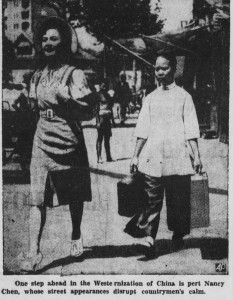
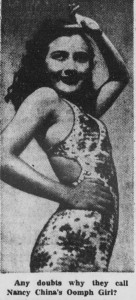
Posted: June 10th, 2015 | No Comments »
A new small edition of Midnight in Peking is out in France – Minuit a Pekin – from Le Livre de Poche for only 7 euros 60 – looks lovely. It’s a Prix des Lecteur – which is apparently, ‘Décerne annuellement le prix des lecteurs à un romancier choisi par 170 jurés amateurs. Deux sélections existent : littérature et polar.’
More details here
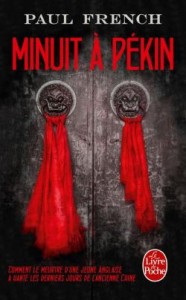
Posted: June 9th, 2015 | No Comments »
Came across a reference the other day to the tale that the Grand Cinema, once known to Shanghailanders as ‘the best cinema of the Far East’, on the Bubbling Well Road (now the Grand Theatre on Nanjing West Road) was formerly a hotbed of illicit fun. Apparently, in the 1930s, the matinee performances were known for lesbian Shanghailanders sitting alone in the dark waiting to see who would sit next to them and then….Anyway, it’s a lovely Hudec-designed art-deco picture house so why not hook up in style!
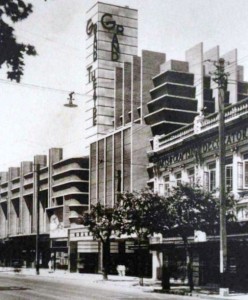
Posted: June 8th, 2015 | No Comments »
The latest from Earnshaw Books is Andrew Hicks’s A True Friend to China: The Friends Ambulance Unit ‘China Convoy’, 1945-1951.

China in the late 1940s was another world, an ancient society still in the grips of feudalism, desperately poor and in need of modernisation. There are many formal histories of those pivotal and turbulent times but Jack Jones is among the few foreigners to have written contemporary accounts of day-to-day life there. Together with his fellow members of the Friends Ambulance Unit ‘China Convoy’, his long struggle to bring medical supplies and services to the poorest regions of China is vividly evoked in this book. Written by him as articles for the China Convoy’s newsletter and lost and unread for more than half a century, these have recently been discovered in Quaker archives in London and Philadelphia. An edited selection now tells the remarkable story of how Jack and his team battled against all the odds in life-threatening situations to help relieve the overwhelming suffering of the Chinese people.
Posted: June 7th, 2015 | No Comments »
RAS Lecture
June 9th 2015
7pm for 7.15pm
Â
Tavern at the Radisson Xingguo Hotel
DR. MAISIE MEYER on Shanghai Millionaires: Shanghai’s Baghdadi Jews

The Baghdadi Jews who came to Shanghai are legendary. The names Hardoon, Kadoorie and Sassoon were emblazoned over the business and social life of East Asia for over a century. They were exciting, dynamic personalities and their philanthropy spread far beyond the confines of the Treaty Port. Dr. Maisie Meyer digs behind the legend through her skillful use of archival material. Photographs permit us to visualise the lives and times of these individuals.
Dr. Meyer pioneered the research of the Baghdadi Jewish community of Shanghai, having appreciated over 30 years ago the unique mix represented by its various components. Over this period, she has forged relationships with many of the families and individuals who paid a large part in this burgeoning community. Her ground-breaking book ‘
From the Rivers of Babylon to the Whangpoo: A Century of Sephardi Jewish Life in Shanghai’ (Lanham M.D.2003) is widely considered as the definitive history of the Baghdadi Jewish merchants who settled in Shanghai in the mid-19th century. Her determination to preserve the memory of this community and the unrivalled access that she has enjoyed to both the key characters and previously unseen source material has resulted in her recent publication ‘
Shanghai’s Baghdadi Jews: A Collection of Biographical Reflections’.
Dr. Meyer is a double graduate in English and Humanities, both with honours, and obtained an MA degree in International History at the London School of Economics. The British Academy awarded her a scholarship to do a PhD. The subject she chose to research reflects her personal autobiography. It gives her a deeper understanding of Shanghai’s Baghdadi Jews, their emulation of a British lifestyle and their desire to appear as British as possible within the parameters of their faith.
ENTRANCE: Members 70 RMB, Non-members 100 RMB
Includes a glass of wine or soft drink
MEMBERSHIP applications and membership renewals will be available at this event.
WEBSITE: www.royalasiaticsociety.org.cn










